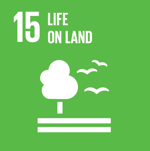Risk assessment in agricultural production in Uruguay and Paraguay
 Uruguay
Uruguay
 Paraguay
Paraguay
Executive Summary
The Project generated methods and tools to establish an information and monitoring system based on historical records, satellite images and simulation models, all integrated into a GIS for the evaluation of risks in agricultural production associated with climatic variability and the technological level of Paraguay and Uruguay.
In Uruguay, a study area was defined to conduct the following activities: (a) agroclimatological characterization and definition of Homogeneous Agroecological Zones (ZAHs) to produce extensive agricultural crops; (b) study of production technologies to modify the probability of occurrence of historical deviations, and thereby define Specific Agroecological Zones (ZAEs); (c) methodological development to establish permanent monitoring of climatic and agronomic variables; and (d) quantification of the historical variability of the physical and economic results of extensive agricultural crops, in order to define the probability of deviations in yields, including extreme deviations (emergency situations).
At the same time, the proposal included the following activities in Paraguay: (a) advice to the institutions that would serve as the operational bases of the System (hardware, software, etc.) necessary for its implementation and (b) training of personnel from the Paraguayan institutions in the management of the tools and software components of the System (GIS, GPS and simulation models).
The technological solution
The technological solution considered methods and tools to establish information and monitoring systems based on historical records, satellite images, and simulation models. These were integrated into a geographic information system (GIS) for evaluating risks in agricultural production associated with climate variability and the technological capacity of Paraguay and Uruguay.
Results
In Uruguay, the following goals were achieved: 1) The digitization of a geographic information system (Arc View) of soil cartography at a scale of 1: 200,000; 2) The creation of a 30-year historical database of climatic variables; 3) The compilation of historical information of 10 years of summer and winter crops; 4) The classification of LANDSAT images and methodology to identify cultivated areas and the state of the crops based on the normalized vegetation index (NDVI); 5) The historical analysis of the stress level of the vegetation; 6) The development of a soil water balance model for different crops; 7) The definition of the ZAEs and 8) The characterization of the study area based on the occurrence of frost.
In Paraguay, three course-workshops were held for officials of the UCA / Faculty of Agricultural Sciences. As a result of the training and transfer activities, staff have begun to develop climate and crop regionalization maps for pilot areas. The project prepared a publication summarizing all the results, which can be accessed at: http://www.inia.org.uy/online/site/108808I1.php
Beneficiaries
The Project did not offer a specific quantification of direct and indirect beneficiaries, however, due to the eminently technical nature of this initiative, the main benefits were received by a relatively small group of specialists in both countries. It should be noted that, although this number is low, the intensity and relevance of training activities was very high.
Sustainable Development Goals




Participating Organizations
Executor
- Instituto Nacional de Investigación Agropecuaria (INIA) - Uruguay
Co-executor
- UC - Paraguay
Graphics and data
Financing by country (in USD)
























